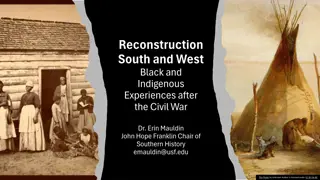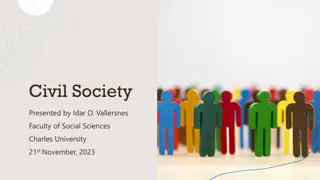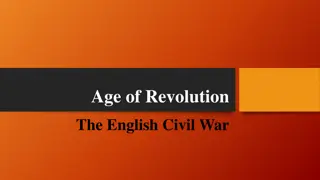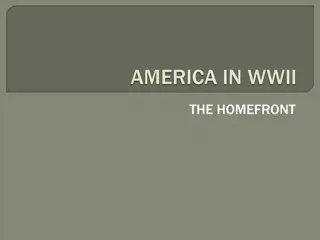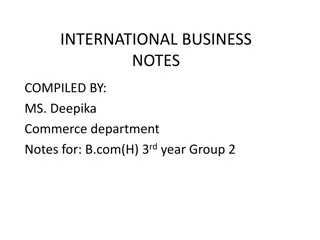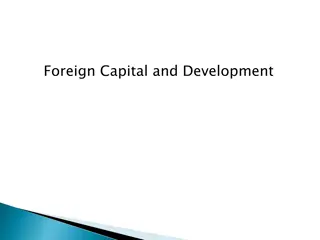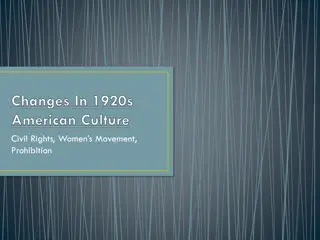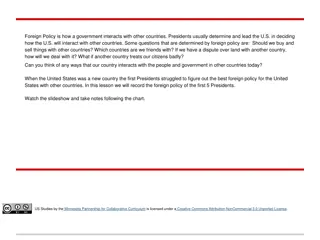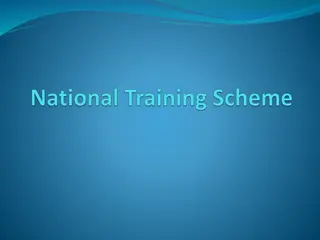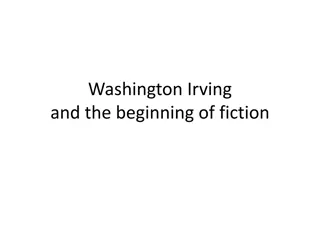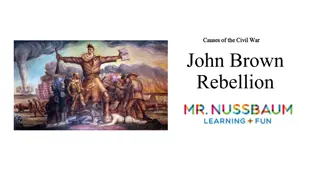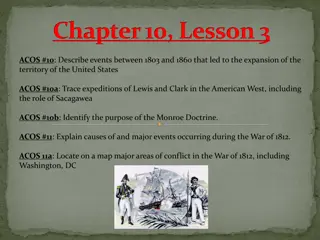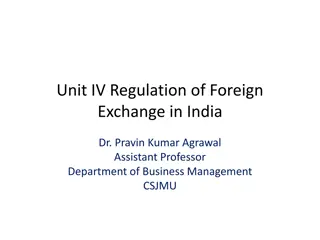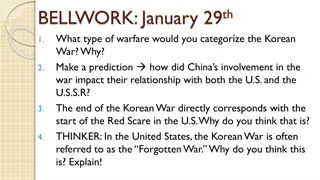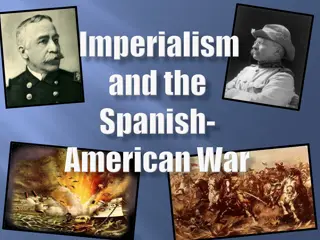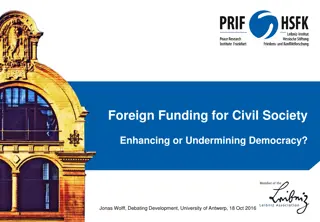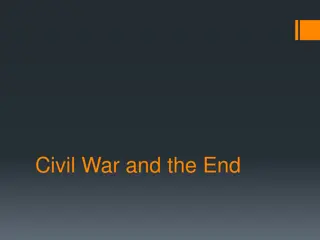American Foreign Policy: After the Civil War
Changes in American foreign policy post-Civil War, from evolving interests to imperialism in Asia and Panama. Learn about key figures like Frederick Jackson Turner and Alfred Thayer Mahan and events like the Spanish-American War that influenced American expansionism and empire-building.
Download Presentation

Please find below an Image/Link to download the presentation.
The content on the website is provided AS IS for your information and personal use only. It may not be sold, licensed, or shared on other websites without obtaining consent from the author.If you encounter any issues during the download, it is possible that the publisher has removed the file from their server.
You are allowed to download the files provided on this website for personal or commercial use, subject to the condition that they are used lawfully. All files are the property of their respective owners.
The content on the website is provided AS IS for your information and personal use only. It may not be sold, licensed, or shared on other websites without obtaining consent from the author.
E N D
Presentation Transcript
United States History II Module 4: Age of Empire American Foreign Policy
Module Learning Outcomes Explain the United States foreign policy 4.1: Examine the changes in American foreign policy after the Civil War 4.2: Describe the Spanish-American War and resulting American expansionism 4.3: Explain American imperialism connected to Asia and Panama 4.4: Examine the connections between the past and present by looking at the impact of Social Darwinism
Learning Outcomes: American Foreign Policy After the Civil War 4.1: Examine the changes in American foreign policy after the Civil War 4.1.1: Explain the evolution of American interest in foreign affairs from the end of the Civil War through the early 1890s 4.1.2: Identify the contributions of Frederick Jackson Turner and Alfred Thayer Mahan to the conscious creation of an American empire 4.1.3: Explain the U.S. annexation of Hawaii and Samoa
Introduction to American Foreign Policy After the Civil War What you ll learn to do: examine the changes in American foreign policy after the Civil War
American Interest in Foreign Affairs (cont.) During Reconstruction, the US government showed little interest in foreign affairs, but this shifted as the country neared completion of Manifest Destiny. In 1867, Alaska was purchased from Russia for $7.2 million. (Seward s Folly) The US developed an expansionist foreign policy for the following reasons o Business- Access to International Markets o Religious/Missionary Work o Social Interest- Rudyard Kipling s The White Man s Burden
Creating an Empire Frederick Jackson Turner wrote The Frontier Thesis, which stated that the existence of the western frontier forged the basis of American identity. Alfred T. Mahan was a naval strategist who wrote The Influence of Seapower upon History, and argued that the US needed a strong navy to build an empire.
Creating an Empire (cont.) American businessmen were interested in the sugarcane industry in Hawaii. Queen Liliuokalani tapped into a strong anti-American resentment among native Hawaiians over the economic and political power of American sugar companies. A coup overthrew the queen and seized Hawaii as an American protectorate. Hawaiian annexation was debated. Hawaii became a state in 1959.
Creating an Empire (cont. II ) The US had similar strategic issues in Samoa, with the goal of access the naval refueling station at Pago Pago The First Samoan Civil War was fought between 1886 and 1894 American Samoa remains an unincorporated territory of the United States.
Practice Question 1 Which of the following describes Alfred Thayer Mahan s contribution to the creation of an American empire? A. The Publication of The Frontier Thesis, popularizing Manifest Destiny. B. The publication of The Influence of Seapower Upon History, urging the United States to build a modern naval fleet. C.Leading the coup against Queen Liliuokalani of Hawaii D. Coining of the term, The White Man s Burden .
Learning Outcomes: The Spanish-American War 4.2: Describe the Spanish-American War and resulting American expansionism 4.2.1: Explain the origins and events of the Spanish-American War 4.2.2: Analyze the different American opinions on empire at the conclusion of the Spanish-American War 4.2.3: Describe the creation of an American empire that included Guam, Puerto Rico, Cuba, and the Philippines 4.2.4: Describe the situation surrounding the Philippine-American War
Introduction to The Spanish-American War What you ll learn to do: describe the Spanish-American War and resulting American expansionism
The Spanish-American War The Spanish-American War was the first significant international military conflict for the US since the war against Mexico in 1846. The Splendid Little War resulted in the US becoming a world power The war was rooted in the issue of Spanish control over Cuba. Yellow Journalism sensationalized news articles, exaggerating the truth in order to sell more papers.
The Spanish-American War (cont.) As tensions in Cuba increased, President McKinley ordered the USS Maine to dock in Cuba and evacuate Americans. An explosion destroyed the Maine on February 15, 1898. Spain was blamed for the explosion and Yellow Journalists sensationalized the event Remember the Maine, To Hell with Spain! The US declared war on Spain, but further investigation determined that the explosion was an accident not caused by Spain.
The Spanish-American War (cont. II) Congress passed the Teller Amendment, stating that the US would not annex Cuba following the war. Teddy Roosevelt led his Rough Riders, a calvary unit, in a charge up Kettle Hill surrounding Santiago, Cuba. The US won the war and the victory was celebrated as a reconciliation between North and South.
Establishing Peace and Building an Empire The Treaty of Paris was signed on December 10, 1898, and included the international recognition that the American Empire included the following o Guam o Puerto Rico (Foraker Act) o Cuba (Platt Amendment) o Philippines The Anti-Imperialist League opposed the idea of America empire building.
Establishing Peace and Building an Empire (cont.) Like the Cubans, Filipinos had waged a long war against their Spanish colonizers. The Philippine-American War was a brutal conflict. Filipino forces outnumbered Americans but were badly underequipped and outgunned The Taft Commission, under William Taft, acted as a government in the Philippines following the war.
Practice Question 2 Which of the following was the most direct cause of the Spanish-American War? A. The coup against Queen Liliuokalani of Hawaii B. Muckrakers exposing corruption in Hawaii C.The explosion of the USS Maine D. The Zimmerman Telegram
Learning Outcomes: American Imperialism in Asia and Panama 4.3: Explain American imperialism connected to Asia and Panama 4.3.1: Describe the role of the Open Door in U.S. foreign policy with China 4.3.2: Explain how U.S. diplomatic relations with Japan differed from the rest of East Asia 4.3.3: Explain and give examples of big stick foreign policy and the Roosevelt Corollary to the Monroe Doctrine 4.3.4: Describe Theodore Roosevelt s use of the big stick to construct the Panama Canal 4.3.5: Explain how William Howard Taft used American economic power to protect the nation s interests in its new empire
Introduction to American Imperialism in Asia and Panama What you ll learn to do: explain American imperialism connected to Asia and Panama
Economic Imperialism in East Asia In China, countries carved out their Spheres of Influence in the Chinese market that they could exploit through tariff and transportation agreements Secretary of State John Hay introduced the Open Door Notes, stating that all countries should have equal and total access to all markets, ports, and railroads, evening the playing field
Economic Imperialism in East Asia (cont.) The Boxer Rebellion was an insurgency in China led by a group known as the Righteous and Harmonious Fists that tried to end Western influence and power in China. The US, along with Great Britain and Germany, sent over two thousand troops to end the rebellion. Russo-Japanese War took place from 1904-1905 and resulted in Japanese victory.
Roosevelts Big Stick Foreign Policy Roosevelt s Foreign policy was based on the African proverb speak softly, and carry a big stick, and you will go far. Roosevelt was focused on diplomacy but would use force if necessary The Thomson-Urrutia Treaty, ended conflict with Colombia and Colombia recognized Panama as an independent nation. Construction on the Panama Canal then began, with the goal of decreasing transportation and shipping times and costs.
Roosevelts Big Stick Foreign Policy (cont.) The Panama Canal opened in 1914. The Roosevelt Corollary was an addition to the Monroe Doctrine, stating that the US wanted Europe to stay out of Western Hemisphere affairs and that the US would intervene in Latin America if there were any issues. (US as International Police Power) Map showing Panama and the location of the canal connecting the Gulf of Panama and the Caribbean Sea.
Tafts Dollar Diplomacy Dollar Diplomacy was Taft s foreign policy, which involved using American economic power to push for favorable foreign policies Taft paid off the debts that Latin American countries had to European countries, which made them indebted to the United States Taft reorganized the US State Department to create geographical divisions
Practice Question 3 What is the significance of the Open Door notes? A. They opened all doors to free trade in China. B. They ended the Boxer Rebellion C.They resulted in the construction of the Panama Canal. D. They were a result of the Roosevelt Corollary.
Learning Outcomes: Social Darwinism Past and Present 4.4: Examine the connections between the past and present by looking at the impact of Social Darwinism 4.4.1: Analyze primary source documents to examine the historical perspectives that both shaped and influenced American imperialistic attitudes 4.4.2: Examine the lingering effects of Social Darwinism and the Insular Cases on life and attitudes in the U.S. today
Historical Hack: Social Darwinism Past and Present What you ll learn to do: examine the connections between the past and present by looking at the impact of Social Darwinism
Class Activity: Social Darwinism Past and Present Take a look at this cartoon and consider the following: What is biological Darwinism? What is Social Darwinism? How do biological and Social Darwinism compare and differ? Is Survival of the Richest an accurate description of Social Darwinism?
Quick Review In the late 1800s/early 1900s, after the United States completed Manifest Destiny, they began focusing beyond its borders. The Spanish-American War solidified the United States as a global power, acquiring colonies and trade routes. The US expanded its influence into Asia and Latin America during the presidencies of Teddy Roosevelt and Taft. Terms to know: Alfred T. Mahan, Yellow Journalism, Open Door Notes, Boxer Rebellion, Panama Canal, Big Stick Diplomacy, Roosevelt Corollary, Dollar Diplomacy
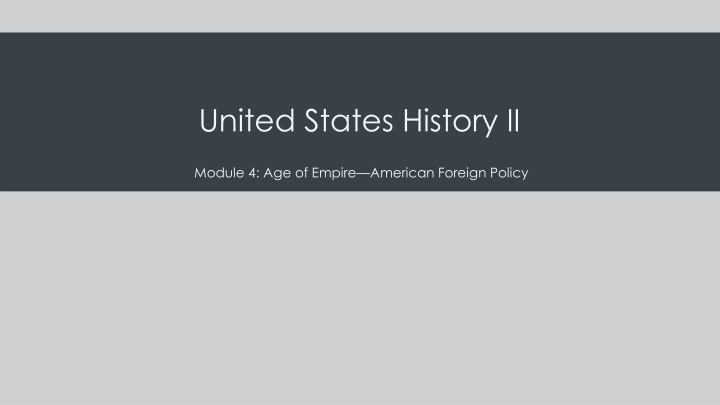

![❤[PDF]⚡ Civil War Talks: Further Reminiscences of George S. Bernard and His Fel](/thumb/20551/pdf-civil-war-talks-further-reminiscences-of-george-s-bernard-and-his-fel.jpg)
